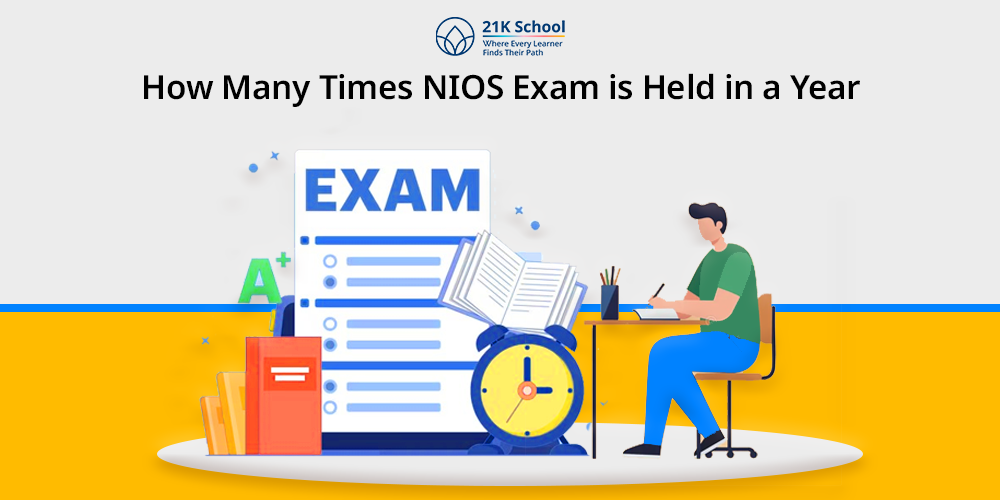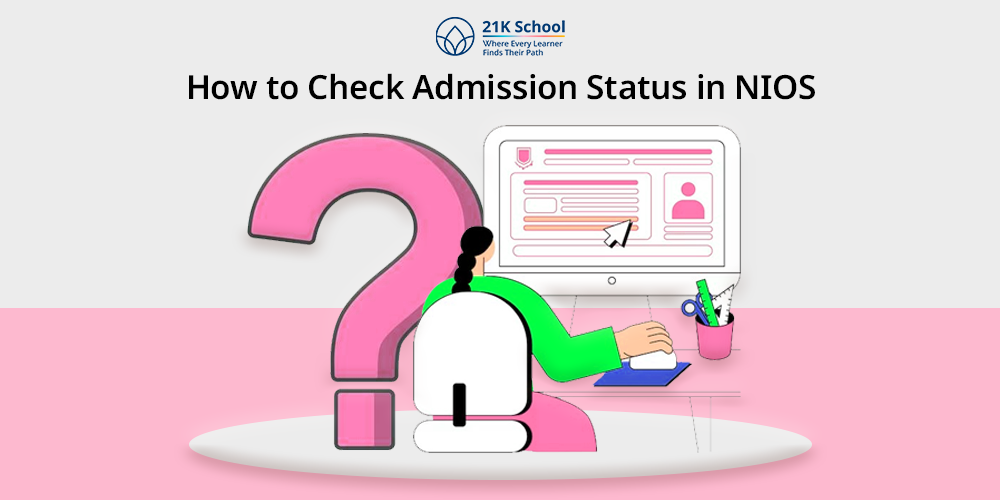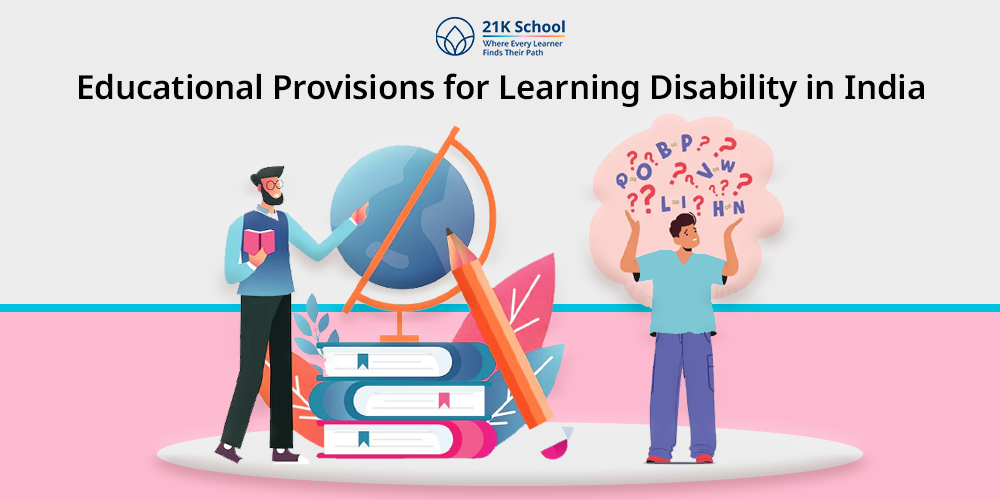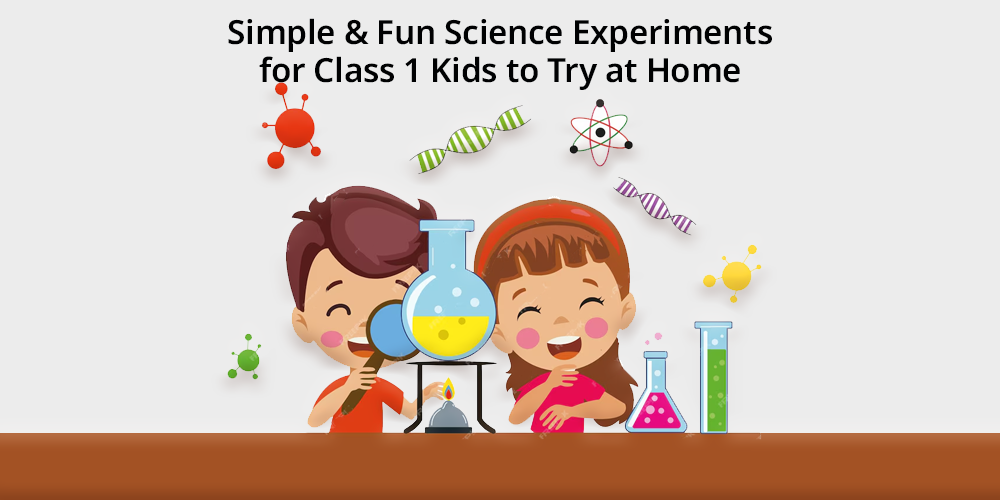
Science holds special appeal for youngsters. Students in Class 1 show extensive curiosity about exploring their environment.
The investigation of science experiments provides an excellent opportunity to foster curiosity in children.
Hands-on experiments supply children with enjoyable learning opportunities for fundamental scientific principles.
This article demonstrates easy and intriguing school science experiments suitable for first-grade students.
Elementary students can perform DIY science experiments using everyday household materials to make objects like a lava lamp and create invisible messages.
Through these activities children experience the joy of experimentation while cultivating such strong science interest that it persists throughout their educational journey.
Also Read: 10 Easy Science Experiments For Young Scientists
Contents
1. Lava lamp
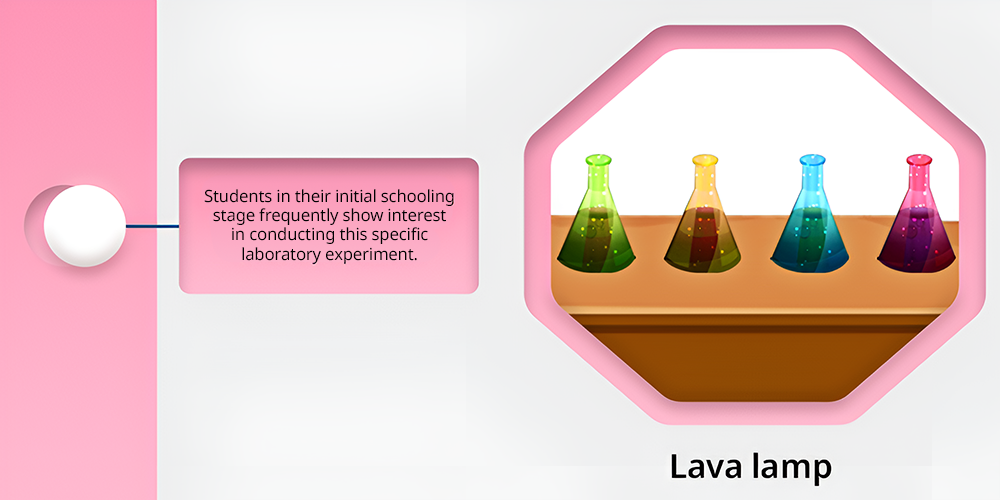
Students in their initial schooling stage frequently show interest in conducting this specific laboratory experiment.
The Materials to make this simple activity are easy to obtain so anyone can create its vibrant and engaging results.
All you need to make your lava lamp at home are oil, water, food coloring and an Alka-Seltzer effervescent tablet.
Materials:
- A clear plastic bottle
- Vegetable oil
- Water
- Food coloring
- Effervescent tablet (like Alka-Seltzer)
Steps:
- Pour vegetable oil until it reaches a point three-quarters from the bottom until the bottle’s opening.
- Fill the bottle with water until you leave a narrow empty space at the top.
- Place small puddles of food coloring into the bottle.
- Use tweezers to break then effervescent tablet before dropping one of its pieces inside the bottle.
- The bubbling process shows the colors moving up and down without breaking the facade of a lava lamp.
How it works?
Water cannot mix with oil because each liquid has a distinctive density value. An effervescent tablet generates rising gas bubbles which creates a lava-lamp-like appearance.
2. Elephant toothpaste
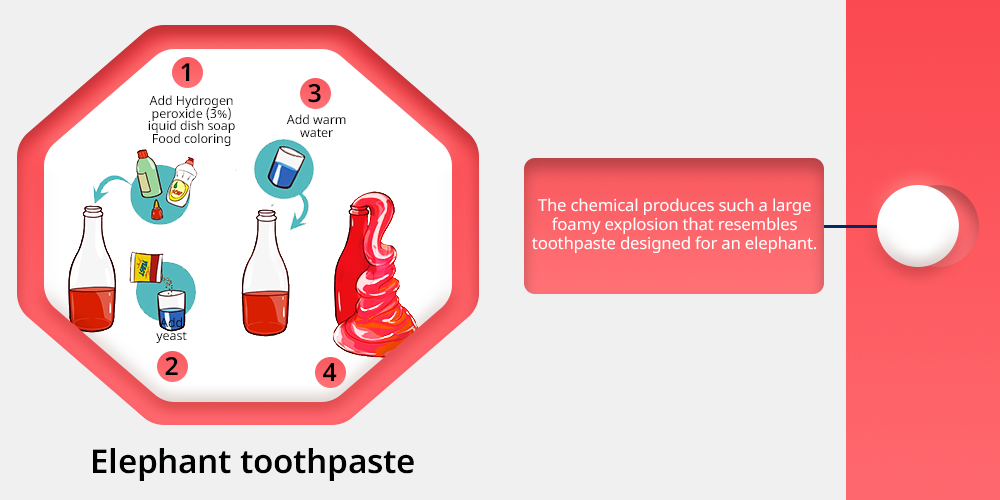
Young students will find significant interest in this experimental process which demonstrates chemical reactions.
The chemical produces such a large foamy explosion that resembles toothpaste designed for an elephant!
Materials:
- A plastic bottle
- Hydrogen peroxide (3%)
- Liquid dish soap
- Food coloring (optional)
- Dry yeast
- Warm water
Steps:
- Add hydrogen peroxide to a plastic bottle until it reaches about one third of its capacity.
- Put several drops of dish soap into the bottle and use gentle motion to blend it with the other solution.
- Food coloring allows you to introduce color into the bottle when desired.
- To produce the yeast mixture you should combine the warm water and dry yeast in a different container.
- After adding the yeast mixture to the bottle you can see foam discharge through an explosive and bubbly reaction.
How it works?
Oxygen gas forms as hydrogen peroxide undergoes decomposition. The combination of dish soap and gas precipitation creates foam. The yeast serves as a reaction catalyst which helps the process move more quickly.
Also Read: science experiments for 4th class
3. Invisible ink
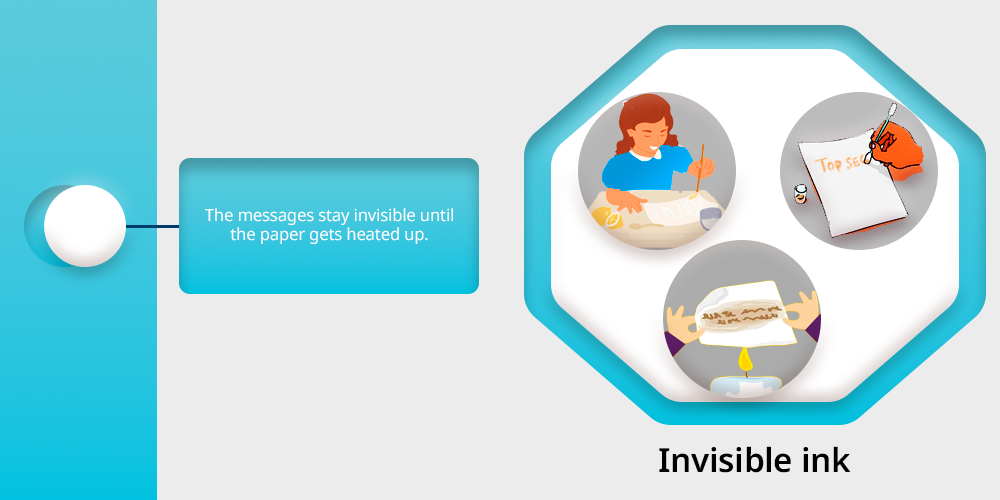
A really fun procedure allows kids to perform spying activities. The messages stay invisible until the paper gets heated up.
Materials:
- Students can use one of two different solutions: lemon juice or baking soda mixed with water.
- Q-tip or cotton swab
- White paper
- A lamp or iron (for heating)
Steps:
- To activate the Q-tip users need to dip it in lemon juice or baking soda solution.
- Workers can write their communication using the wet Q-tip on the material surface.
- Let the paper dry completely.
- Under adult supervision heat the paper with either a lamp or an iron in order to make the message appear.
How it works?
Hot temperatures trigger lemon juice or baking soda reactions that create darkening which reveals hidden letters.
Also Read: Science Projects for Kids- Rocks and Minerals
4. Light refraction

The exploratory setup shows to children how light behavior changes when it moves through different substances.
Materials:
- A glass of water
- A pencil or straw
- A piece of paper
Steps:
- Fill a glass with water.
- Slightly insert a pencil or straw across the water surface inside the glass.
- Check out the pencil when you view it through water to see its illusion of distortion and straight breakage.
How it works?
The water creates two effects on light: slowing its passage until the pencil’s appearance becomes curved.
Also Read: Science experiments for class 3
5. Magic milk
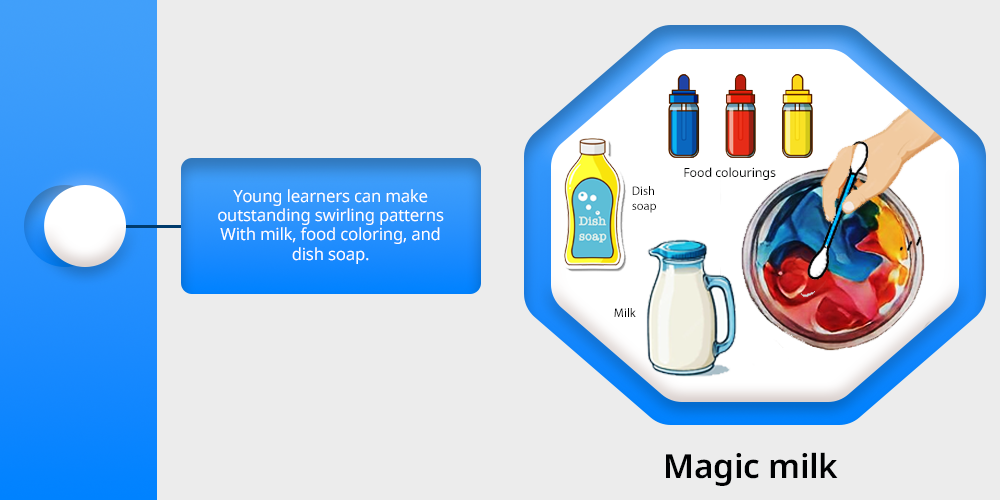
This colorful experiment will definitely mesmerize you. With milk, food coloring, and dish soap young learners can make outstanding swirling patterns.
Materials:
- A shallow dish or plate
- Milk (full-fat works best)
- Food coloring
- Dish soap
Steps:
- Put enough milk into the container to completely hide the bottom area.
- Put several drops of food color into the milk solution.
- Cotton swab impregnated with dish soap should lightly brush the milk surface.
- The movements of the colors become magical to watch as they move through the mixture.
How it works?
When applied to milk the dish soap disrupts surface tension while interacting with fat particles to create stunning food coloring patterns.
6. Water rainbow
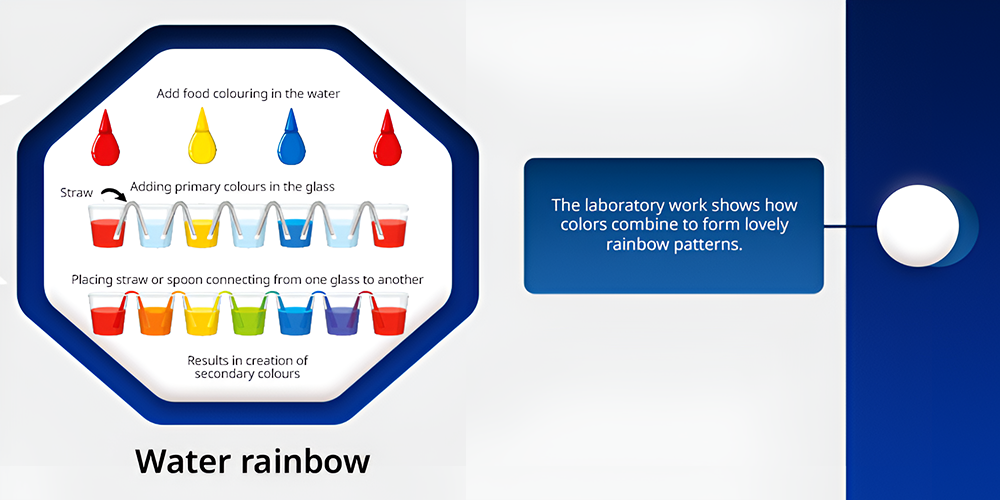
The laboratory work shows how colors combine to form lovely rainbow patterns. The activity provides children with an excellent opportunity to learn about mixing colorful components.
Materials:
- 6 clear cups
- Water
- Red, yellow, and blue food coloring
- A spoon or straw
How it works?
By blending primary colors educators teach students about creating secondary colors (orange from red and yellow or green from yellow and blue or purple from red and blue).
7. Dancing corn
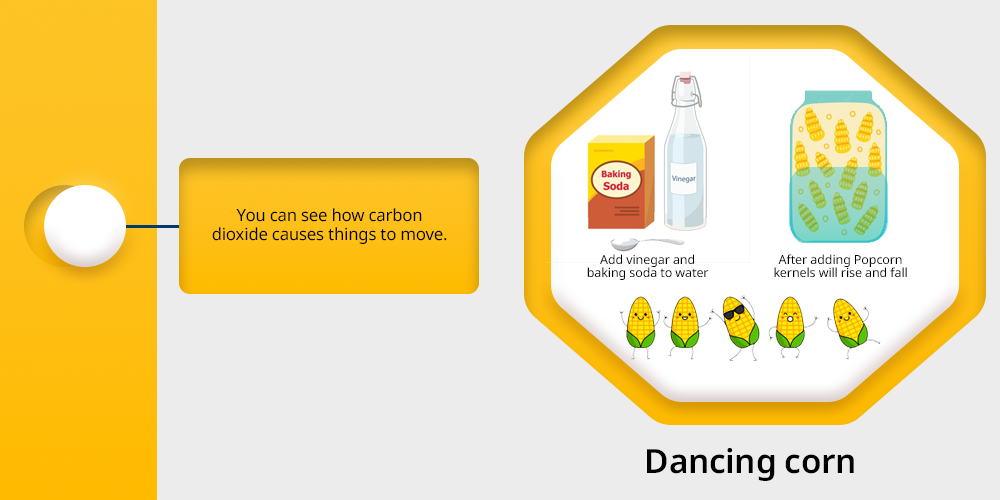
By performing this straightforward experiment you can see how carbon dioxide causes things to move.
Materials:
- A clear glass or cup
- A few pieces of popcorn kernels
- Water
- Baking soda
- Vinegar
Steps:
- Pour water into the glass then drop several popcorn kernels into it.
- Put one spoonful of baking soda into the water.
- Pour the vinegar into the glass with slow motion.
- The glass shows popcorn kernels performing moves throughout the container.
How it works?
Popcorn kernels will rise and fall because the reaction of baking soda with vinegar creates carbon dioxide bubbles.
8. Floating Eggs
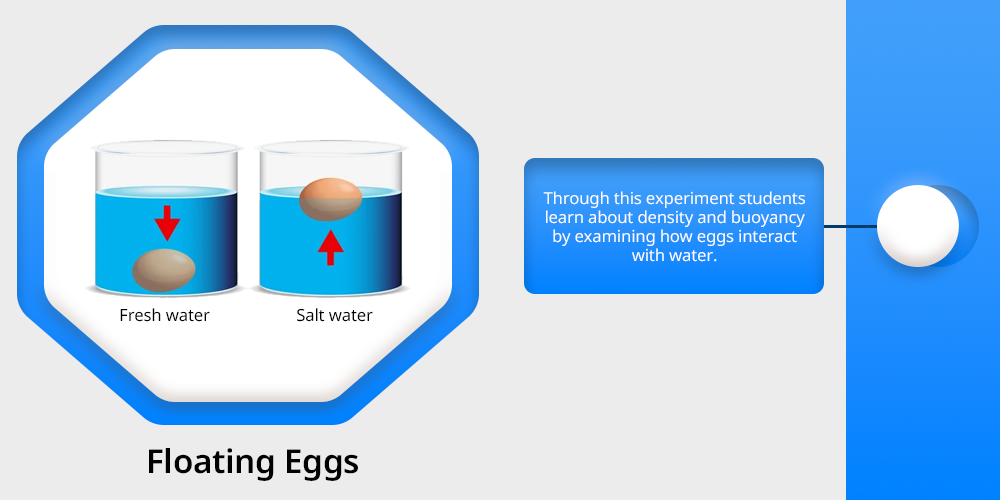
Through this experiment students learn about density and buoyancy by examining how eggs interact with water.
Materials:
- A glass of water
- Salt
- An egg
Steps:
- Drop the egg into the glass container containing water.
- The object stands visibly below the water’s surface.
- Stir the salt into water until it becomes dissolved.
- When ready observe the egg floating inside the glass.
How it works?
The egg floats above water because the salt ends up making the water denser.
Also Read: Science Experiments for Kids-Renewable Energy
Ending Note
Young students can find science lessons exceptionally enjoyable when conducting experiments. Children learn significant scientific principles through simple hands-on laboratory work.
Through making lava lamps and watching corn dance activities students experience firsthand encounters which drive their curiosity while promoting questions about their natural environment.

